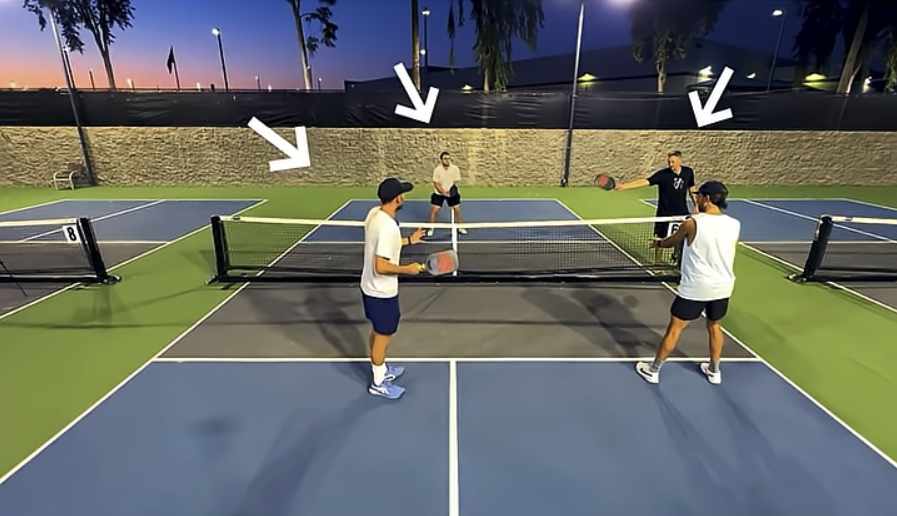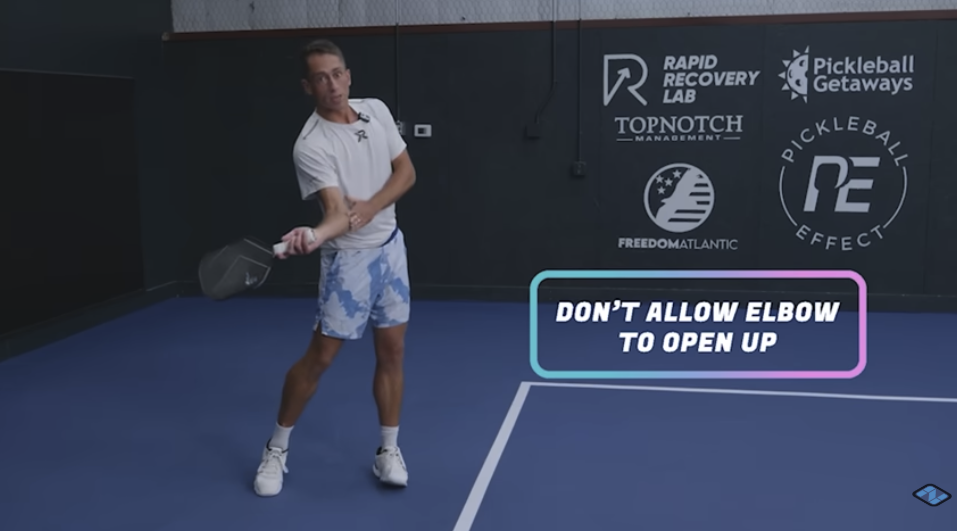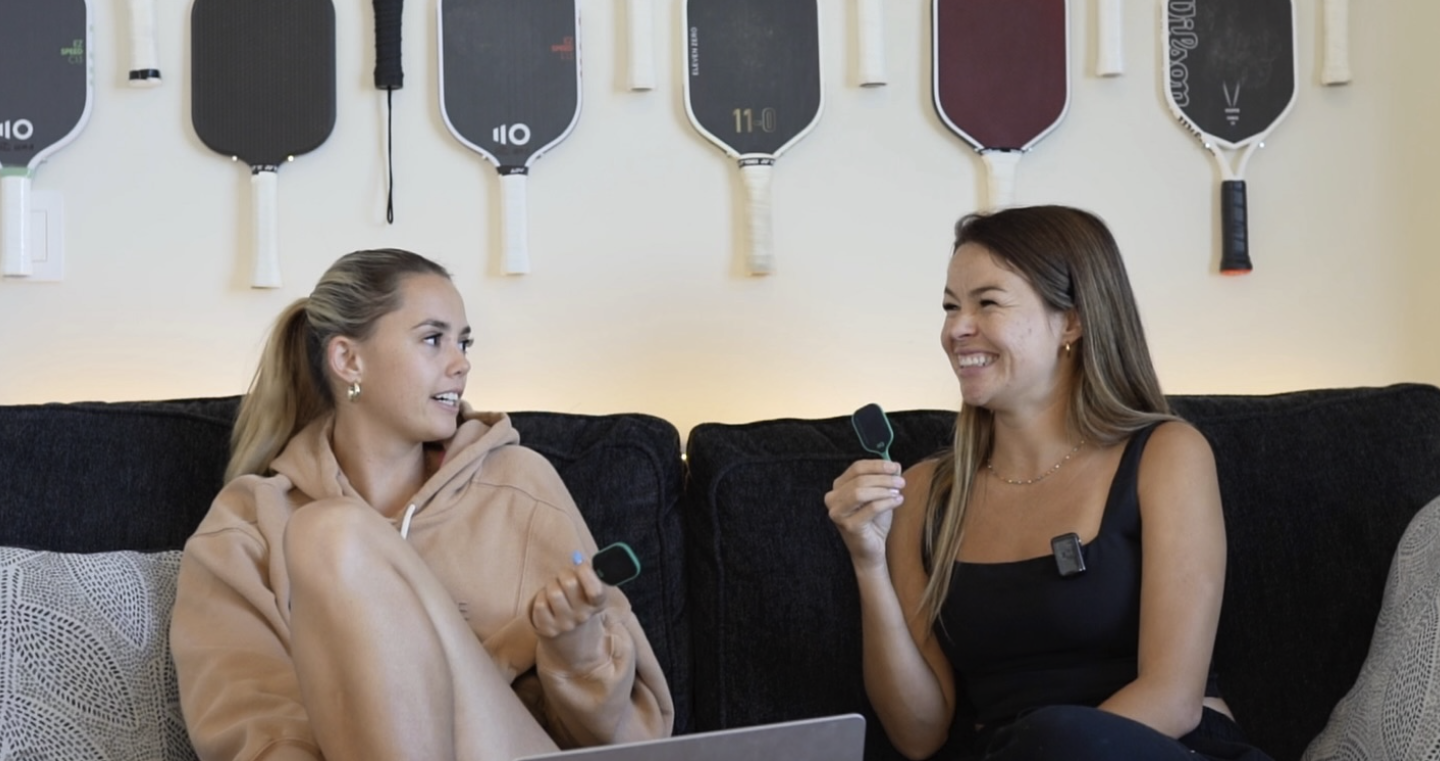
| Not to be confused with table tennis, Pepper Pong is a new game for players at every level as well as a dynamic travel accessory for families. From the look and feel of the paddles to the unique bounce characteristics of the intentionally designed balls, this sneaking little game is worthy of the “mini-pickleball” mantle. It’s no wonder pros and novices are starting to take notice. We particularly like Pepper Pong’s versatility. The fence-like net can be extended across any flat-ish surface, and you can choose from three different balls based on your opponent, style and mood. It sets up in seconds and gameplay is virtually silent – finally a pickleball-oriented activity that doesn’t generate noise complaints. Once you’re done playing, all the equipment fits neatly into the included carrying case, ready for action next time. All in all, we found Pepper Pong to be a high-quality product and fun gift idea for anyone who enjoys pickleball. |
First Look
Pepper Pong arrives in what looks like a high-end shoebox, neatly packed and branded. Opening the box, we find the sleek travel case into which Pepper Pong fits – picture a Dopp kit you use for overnight hotel stays, but instead of toothpaste and deodorant, it contains four paddles, one collapsible net, one sleeve of tri-color balls and various accoutrements (a red headband and wristbands, stickers, and the official rulebook – more on this later).

Design and Components
Pepper Pong equipment only bears a passing resemblance that of ping pong, and the similarities fade quickly. Let’s start with the paddles, which are light and springy with thick foam surfaces and sturdy rubber grips. The familiarity is instant: They are clearly designed to mimic the look, feel and shape of pickleball paddles, being larger and more angular than ping pong paddles but smaller and nimbler than their on-court counterparts. Since the game is designed for versatility, they’re soft enough to keep furniture safe yet tough enough to withstand years of use. In Pepper Pong’s unique branding parlance, the paddles are called “mullets.”

The three included balls (known as “peppers”) are made from space-age airfoam, and they come in a clear plastic sleeve similar to golf balls or tennis balls. Once again, the first thing we experienced is the quality of materials, followed by the subtle differentiation between the balls themselves. The red ball (“ghost pepper”) is clearly the firmest, fastest and bounciest ball – this thing is designed for competitive settings and advanced skills. The yellow ball (“Habanero”) is the goldilocks of the bunch, intended for long rallies loaded with finesse. Lastly, the soft, foamy green ball (“Jalapeno”) ranks as the slowest and most forgiving, designed for close-range games in tight areas. To note, while each Pepper Pong set comes with one tri-color ball pack, you can purchase single-color packs separately. Our only qualm here is we wish each set came with two ball packs instead of one.

The net or “fence” is perhaps the most unique and prized piece of Pepper Pong equipment. To use an outdated comparison, it’s roughly the size of 4-5 stacked CD cases when fully collapsed, and the pattern is that of steel floor plates. To set up a game, you simply extend the fence like an accordion across the middle of your playing surface. The beauty here (and this can be said for the balls as well) is that almost any flat-ish surface will do – no need for ping pong’s bulky, immaculate, dedicated table.
Thanks to the variability of the fence and balls, you can basically “right size” every match. Squaring off against a skilled opponent on an expansive playing surface, like a large kitchen island? Deploy the fence to its full functional length (roughly all 50″) and consider the fast red ball. Casually rallying with a beginner on a smaller surface, such as a card table or camp cooler? Fold in the outermost hinges of the fence (it gets as small as 15″) and test out the steadier, easier green ball. The permutations are endless.

Gameplay Dynamics
True to form, gameplay is full of nuance, artistry and surprisingly spirited rallying. We experimented with all three balls as well as single/double formats, and each match had a distinct feel. We like to think that we are reasonably skilled pickleball players as well as racquet sports enthusiasts in general, so we assumed that the “advanced” red ball would be our preference; however, after several games, we ended up favoring the yellow ball (perhaps the most pickleball-like) which has just the right amount of bounce and “give” to keep games lively. The green ball is a bit of a sleeper in the sense that it really slows down the game, so players have to be hyper-vigilant with lots of action near the net.
Pepper Pong does have its own official rulebook – and not surprisingly the rules are very different from ping pong. For example, players are allowed to do drop-serves i.e. bounce the ball once before serving it directly over the net. Additionally, in a “game point” situation, the player in the losing position gets three (!) serve attempts to try to even the score. These rules and other wrinkles (such as being allowed to play off obstacles like low-hanging chandeliers) give the game a dose of unexpected charm.
The ability to play on all different surfaces is a major benefit. We started on our immaculate conference table, then moved outside to concrete table in the park that was not only smaller but also fairly dinged up, and later played on a big fat kitchen island with low clearance. The games became increasingly more intense as irregularities came into play (ping pong equipment would have been worthless in most of these settings) and each match had a different winner.

Overall Impression
Pepper Pong would be a fine addition to your game room or vacation packing list. The travel and packability factors are huge, and we love that we can play it anywhere, anytime, without needing a court reservation. Given the quality, proximity and traction with notable pros, we could see Pepper Pong becoming a warmup/cooldown staple at tournaments around the country.

At Pickleball Portal, we bring you the latest updates, honest news and storytelling, comprehensive how-to guides, expert player advice, and in-depth product reviews & recommendations. Everything you read is original and brought to life by our team of dedicated contributors and trusted personalities. Whether you’re picking up a paddle for the first time or you’re an experienced player, join us as we delve into the heart of the pickleball community. [email protected]
Anuncie Aqui / Advertise Here
Sua marca para o mundo Pickleball! / Your brand for the Pickleball world!

 English
English  Spanish
Spanish  Portuguese
Portuguese  German
German  Italian
Italian  Japanese
Japanese  French
French  Polish
Polish  Russian
Russian  Netherlands
Netherlands  Hungarian
Hungarian  Turkish
Turkish  Videos
Videos  Pickleball Portal
Pickleball Portal








 English (US) ·
English (US) ·  Portuguese (BR) ·
Portuguese (BR) ·